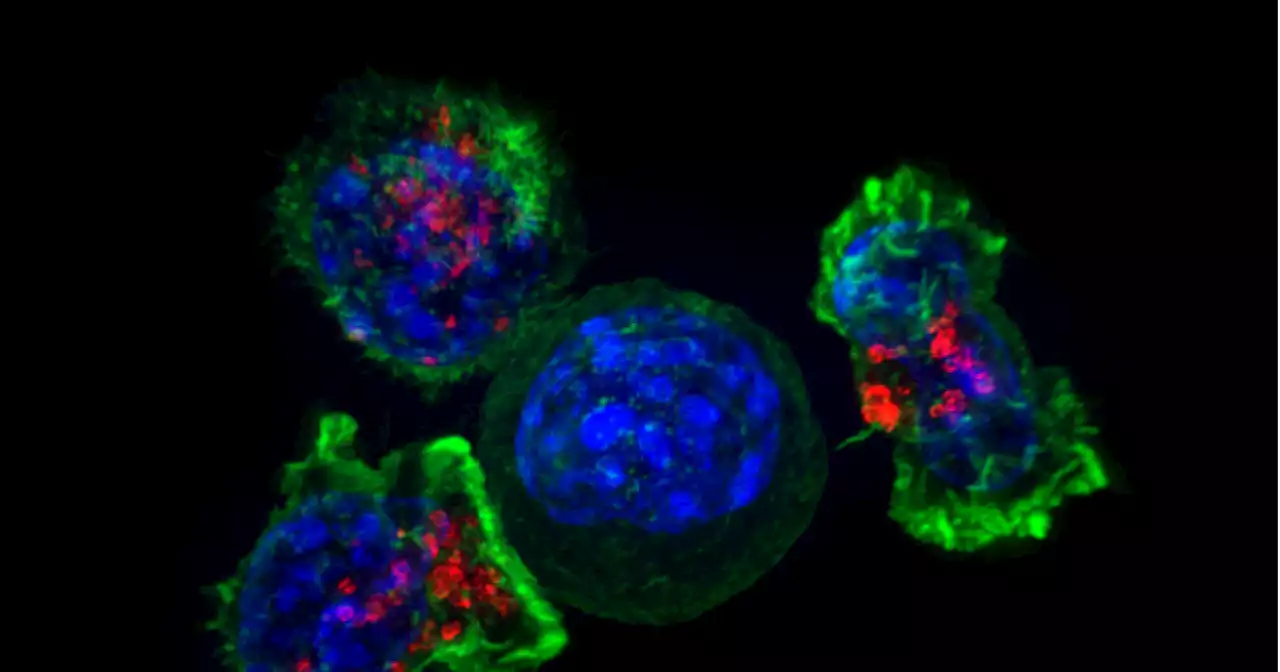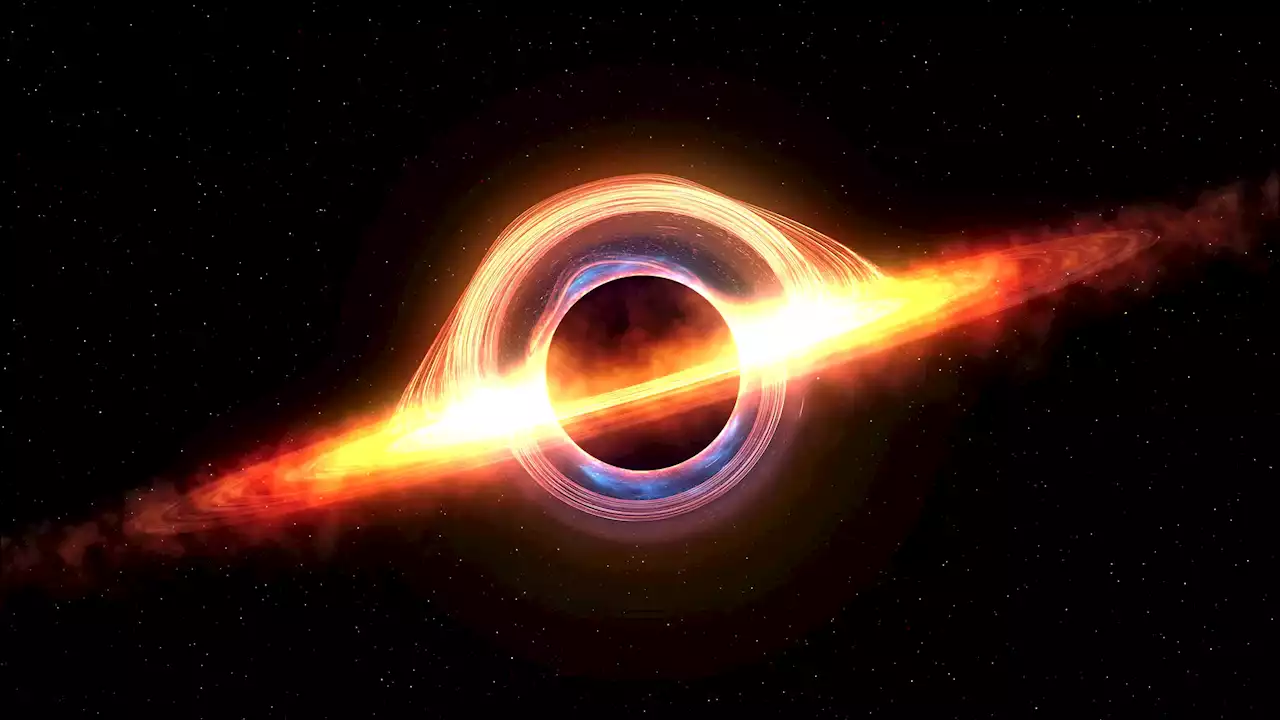A new unreviewed study claims that black holes can burp up star remnants several years after they eat them.
TDEs typically manifest whenever a star comes too close to a black hole. The gravitational pull of the black hole results in the exertion of extreme tidal forces on stars, essentially ripping them to shreds. Any stars that are unlucky enough to fall into a black hole experience a rapid process of disintegration. This event is accompanied by a significant release of electromagnetic radiation in the visible light spectrum.
This leftover material coalesces into a thin, disk-shaped structure, which scientists call an accretion disk, while a portion of the rest of the shattered star is blasted away from the black hole. In turn, this disk makes the gradual transport of matter to the black hole easier. The accretion disk experiences instability early in its inception, which causes material inside the disk to move and collide.
“If you look years later, a very, very large fraction of these black holes that don’t have radio emission at these early times will actually suddenly ‘turn on’ in radio waves,” Yvette Cendes, a research associate at the Havard and Smithsonian Center for Astrophysics, and lead author on a new study toldOf course, the term “burp” is used here to describe the process that happens after the TDE has passed when remnants of the star are literally ejected from the black hole.
United States Latest News, United States Headlines
Similar News:You can also read news stories similar to this one that we have collected from other news sources.
 AI’s Dirty Little Secret: Stanford Researchers Expose Flaws in Text DetectorsIn a study recently published in the journal Patterns, researchers demonstrate that computer algorithms often used to identify AI-generated text frequently falsely label articles written by non-native language speakers as being created by artificial intelligence. The researchers warn that the unreli
AI’s Dirty Little Secret: Stanford Researchers Expose Flaws in Text DetectorsIn a study recently published in the journal Patterns, researchers demonstrate that computer algorithms often used to identify AI-generated text frequently falsely label articles written by non-native language speakers as being created by artificial intelligence. The researchers warn that the unreli
Read more »
 Cancer-killing T cells are getting help from San Diego researchersPapers from La Jolla Institution for Immunology and UCSD show innovative ways that key immune system fighters can be made stronger, more effective
Cancer-killing T cells are getting help from San Diego researchersPapers from La Jolla Institution for Immunology and UCSD show innovative ways that key immune system fighters can be made stronger, more effective
Read more »
 Researchers develop a new reagent and method to create DNA and RNA polymer biohybridsResearchers in Carnegie Mellon University's Department of Chemistry have developed a reagent that opens new possibilities for creating DNA and RNA-based materials that could be used in ultra-stable and smart sensors for biomedical applications. The work was published on Aug. 22 in the journal Chem.
Researchers develop a new reagent and method to create DNA and RNA polymer biohybridsResearchers in Carnegie Mellon University's Department of Chemistry have developed a reagent that opens new possibilities for creating DNA and RNA-based materials that could be used in ultra-stable and smart sensors for biomedical applications. The work was published on Aug. 22 in the journal Chem.
Read more »
 Researchers develop novel tumor-targeting nanospheres to improve light-based cancer diagnosis and treatmentIn a breakthrough in cancer therapeutics, a team of researchers at the Magzoub Biophysics Lab at NYU Abu Dhabi (NYUAD) has made a significant advance in light-based therapies—biocompatible and biodegradable tumor-targeting nanospheres that combine tumor detection and monitoring with potent, light-triggered cancer therapy to dramatically increase the efficacy of existing light-based approaches.
Researchers develop novel tumor-targeting nanospheres to improve light-based cancer diagnosis and treatmentIn a breakthrough in cancer therapeutics, a team of researchers at the Magzoub Biophysics Lab at NYU Abu Dhabi (NYUAD) has made a significant advance in light-based therapies—biocompatible and biodegradable tumor-targeting nanospheres that combine tumor detection and monitoring with potent, light-triggered cancer therapy to dramatically increase the efficacy of existing light-based approaches.
Read more »
 Researchers discover key functions of plasma membrane–cell wall adhesion in rice and critical genes involvedIn a study published in Nature Plants, a research team led by Prof. Chao Daiyin from the Center of Excellence for Molecular Plant Sciences of the Chinese Academy of Sciences identified a novel protein family in plants named as GAPLESS, and revealed that members of this family mediate the adhesion between the cell wall and the plasma membrane at the Casparian strip (CS), a barrier in the root endodermis. This adhesion plays a critical role in controlling nutrient transport and the growth development of rice.
Researchers discover key functions of plasma membrane–cell wall adhesion in rice and critical genes involvedIn a study published in Nature Plants, a research team led by Prof. Chao Daiyin from the Center of Excellence for Molecular Plant Sciences of the Chinese Academy of Sciences identified a novel protein family in plants named as GAPLESS, and revealed that members of this family mediate the adhesion between the cell wall and the plasma membrane at the Casparian strip (CS), a barrier in the root endodermis. This adhesion plays a critical role in controlling nutrient transport and the growth development of rice.
Read more »
 Researchers: Health evidence against gas and oil is piling up, as governments turn a blind eyeWe are seeing deadly heat and fires circle the world. The Intergovernmental Panel on Climate Change warns we are fast running out of time to secure a liveable and sustainable future. Without emergency action to stop mining and burning fossil fuels, the world faces an unthinkable 2.8℃ temperature rise.
Researchers: Health evidence against gas and oil is piling up, as governments turn a blind eyeWe are seeing deadly heat and fires circle the world. The Intergovernmental Panel on Climate Change warns we are fast running out of time to secure a liveable and sustainable future. Without emergency action to stop mining and burning fossil fuels, the world faces an unthinkable 2.8℃ temperature rise.
Read more »
